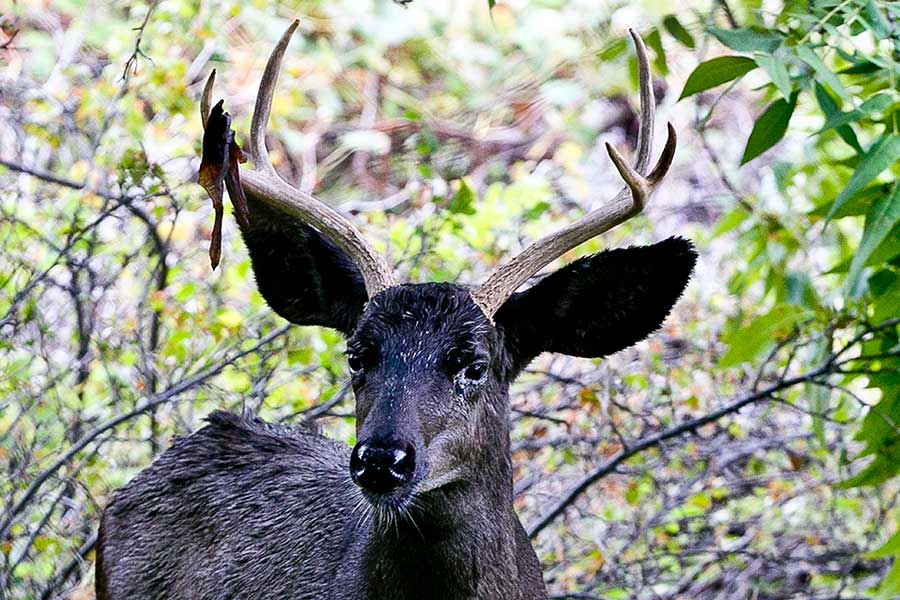Rare black deer in Moab area died of chronic wasting disease
Moab — Recent test results have confirmed that a unique black deer that became well-known and loved by Moab residents died of chronic wasting disease, a relatively rare, but fatal transmissible disease that affects the nervous systems of deer, elk and moose.
The black deer, known by many locals as Coal, was found dead on Dec. 17 in the yard of a Moab resident. Utah Division of Wildlife Resources officials responded and removed the deer from the scene and did a necropsy to determine the cause of death.
The buck was about 3½ years old, and had a rare melanistic condition, which is created by an overproduction of the pigment melanin and causes the animal to be a dark color. Due to the rarity, it's hard to quantify the number of deer that have this condition, but it's estimated to be around 1 in several million — making it even rarer than an albino or piebald mule deer.
"This unique deer touched a lot of people's lives in this area," DWR conservation officer Adam Wallerstein said. "Coal is responsible for putting smiles on a lot of faces during his life. The community will feel his absence."
After the deer died, several residents of Moab rallied together to pay to have him mounted so he could be memorialized. A Colorado taxidermist offered to help cover some of the costs for a pedestal mount. The location for where the mount will be housed is still being determined, but it will likely be displayed in a public building in Moab.
Chronic wasting disease in Utah
The DWR received test results on Jan. 23 confirming the deer died of chronic wasting disease. CWD was first detected in Utah in 2002. The DWR takes CWD very seriously and conducts extensive monitoring each year to stay on top of the disease and its prevalence in the state. The recently updated and approved Mule Deer Management Plan includes a section that addresses ways to slow the spread of the disease in Utah.
CWD is caused by a protein particle, called a prion, that attaches to the brain and spine. It has been compared to bovine spongiform encephalopathy in cows, which is often called "Mad Cow Disease." Infected animals develop brain lesions, become emaciated, appear listless and have droopy ears, may salivate excessively and eventually die. Infected animals can shed prions in urine, feces and saliva, and transmission may occur directly through contact with an infected animal or indirectly through environmental contamination (for example, a dead carcass can spread it to the soil).
Moab is part of the La Sal Unit, which is one of six hunting units that have deer which have tested positive for CWD. The disease is not widespread throughout Utah, and is primarily found in a few counties in central and eastern Utah.
Since July 1, 2019, the DWR has confirmed 16 positive CWD deer statewide. Six of those, including Coal, were in the La Sal Unit. There have been 1,500 deer sampled since July 1, 2019, and 59 test results are still pending.

















